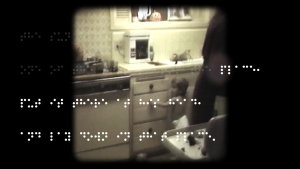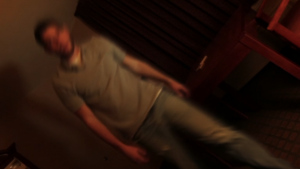The traversal method of Pry quickly becomes intuitive. Zooming in and out on a touch screen is already natural enough for a traverser, so zooming out to see the subconscious and zooming in to see what the main character sees is easy to understand and easy to figure out if the traverser misses the instructions. This work is significantly easier to traverse than more complicated or nested pieces of E-lit, and is presumably more palatable to a traverser who has not spent much time with E-lit, while still having controls that will intrigue traversers familiar with more complicated E-lit. The basic structure, zoom out to see subconscious, zoom in to see sight, and the base level being the conscious thoughts, the text that is the thrust of the story, could be a structure that other electronic works could use. The traversal method seems so versatile and something that could be applied in many different stories to create many different effects that build the main character that it could create its own genre if enough authors mimicked this traversal style. The separation of thoughts, sight, and the subconscious are used in Pry to illustrate the experience of PTSD. I could see this traversal method translating to other mental health disorders in interesting ways, such as making the sight and thoughts more difficult to access over time and the subconscious become overpowering or taking control from the traverser and switching between perspectives rapidly.
The three perspectives combine to create a constant montage, that the traverser controls. During my first traversal through the first four chapters, I tried to switch perspectives as thoroughly and regularly as possible, cycling through conscious, subconscious, conscious, sight, repeatedly in the same order. The conscious is between the subconscious and sight and by opening the subconscious or looking at what the character sees you progress the conscious text, so it is presumably impossible to see both the sight and subconscious that corresponds to one conscious thought, unless the visuals and subconscious last longer than a single conscious thought. It was difficult to traverse this way though, and I found myself switching between just the conscious thought and sight during the demolition chapter and switching mostly between the conscious thought and the subconscious during the first chapter, as the main characters sight is of his perspective in bed. The traversal method and the many montage combinations that can be created with it mean this work is best understood by being traversed multiple times.


